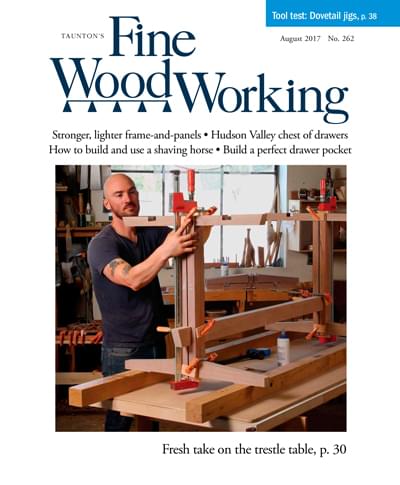How to Make a Tabletop Float
Simple and sturdy joinery allows the top of this table to float without overshadowing the rest of the design or blocking the flow of light between base and top.

Synopsis: Simple and sturdy joinery—ribs attached to a central spine—allows the top of David Welter’s table to float without overshadowing the rest of the design or blocking the flow of light between base and top. The spine and ribs are connected with lap joints; the top is screwed to the ribs at each end.
This hall table commission came with three requirements: contrasting woods, curved aprons, and a floating top. None of these elements is uncommon. In fact, they are done often and often overdone, so I tried to find a more subtle approach to each than is often seen. Curves of constantly changing radiuses have a more dynamic tension than a curve from a compass, so I gently shaped the aprons this way. Contrasting woods do not have to be black and white; two woods in the same color range with different grain character are a…
Start your 14-day FREE trial to continue reading this story.
Plus, access more than 1,900 in-depth articles and more when you become a member.
Start Your Free Trial NowAlready a member? Log In







Comments
Love this approach. Also, the style of a floating top really attracts the eye of the viewer.
David's design is so unique. I wish to personally thank him for the opportunity to emulate his contribution to the woodworking community. In keeping with his spirit of contrast, I used Cherry for the legs and Honey Locus for the rest of the project. My hope, is that it becomes a family heirloom, David's influence is baked right into the piece.
Log in or become a member to post a comment.
Sign up Log in